Patricia Hom

Atrazine is the most widely used herbicide in the U.S., with over 76 million pounds of the active ingredient applied annually. Recently, atrazine has been shown to cause endocrine disrupting effects in many vertebrates. When treated with atrazine in the lab, male Rana pipiens develop pseudohermaphrotidic testes which produce oocytes instead of sperm. This phenomenon has been characterized in frogs from areas of known atrazine contamination. However, there is no evidence directly linking atrazine to these gonadal abonormalities in the wild. In this area-specific study, I will raise field-collected frogs […]
Samantha Liang
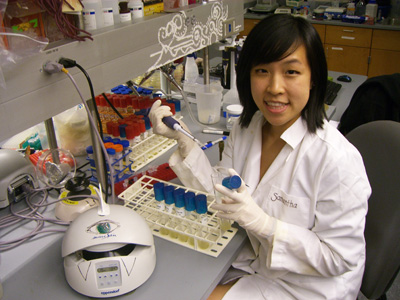
In order for synthetic biology to overcome the limitations of using only naturally-derived biological activities, tools for developing and identifying engineered genetic components with desired biochemical, enzymatic, or regulatory properties are greatly needed. Samantha is building a genetic threshold-gated memory selection circuit incorporating positive/negative selections and an irreversible Cre recombinase excision circuit in the E.coli genome. With this device, bacteria will exist in one of two mutually exclusive antibiotic-resistant states depending on whether or not they exhibit a desired activity, and Cre recombinase expression will serve as the switch between […]
James Suchy

Within the past decade, bed bugs have made a startling reemergence in major cities throughout the developed world. Some attribute this epidemic to increasing international travel and trade, evolved pesticide resistance among bed bugs, and the banning of highly lethal chemicals, such as DDT. Nevertheless, these current conditions necessitate the creation of new, environmentally friendlier, pest-control strategies. The dispersal ecology of bed bugs is poorly understood. Studying their response to various forms of stimulation would reveal information about their behavior that could be utilized in controlling infestations. James will monitor […]
Saori Haigo
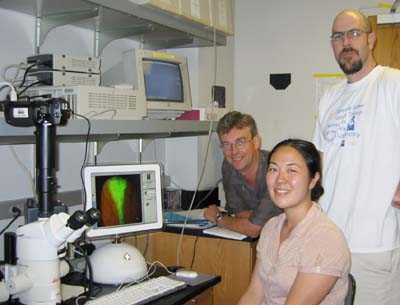
The coordination of cell movement is an integral process in development, affecting morphological shape as well as cell fate specification. While the importance of this process has been long realized, the molecular regulation of cell movement remains poorly understood. Saori plans to investigate the roles of two genes, fuzzy (fy) and inturned (in), in establishing cell polarity during convergent extension movements in the early frog embryo. Convergent extension is the process by which a population of cells redistributes itself by converging along one axis, thereby elongating along the perpendicular axis. […]
Calvin Tyi Hang
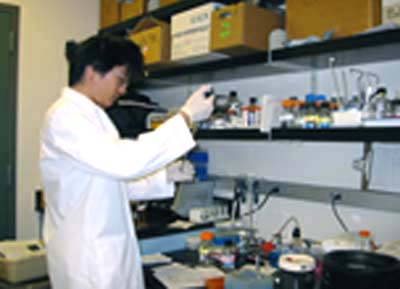
The objective of Calvin’s study is to identify the hormonal factors and their regulatory mechanisms on GPR82 expression in the intestine. GPR82 is a recently identified orphan receptor whose ligand has not been found. Although little is now definitively known about this receptor, GPR82 may play important roles in the regulation of the GI tract. Its expression in peripheral tissues is the highest in the GI tract, and its mRNA level changes in response to the nutritional status in both a cell model and live rats. Calvin hypothesizes that GPR82 […]
James Jung Lee

The field of quantum mechanics has produced many technological breakthroughs including the MRI scanner and Scanning Tunneling Microscope. However, probing the dynamics of particles such as electrons, which are best described by quantum mechanics, on a reasonable time scale has been a long term challenge. James Lee’s project aims to manipulate and measure the spin of electrons on a microsecond timescale. This will be accomplished through the Single Bohr Magneton Detector (SBD) project, under development in the Quantum Nano Lab at UC Berkeley. The SBD is a superconducting device that […]
Ali Rathore
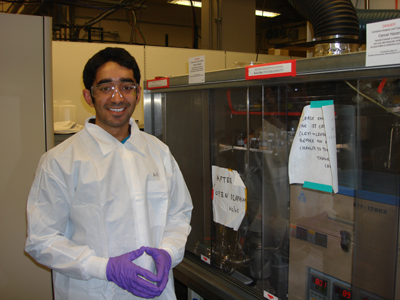
The resurgent interest in renewable energy within recent years has confirmed that solar energy conversion will be key to the global energy economy. However, the vast majority of modern commercial photovoltaic technology is based on expensive single crystalline silicon and does not provide a practical solution for a sustainable energy infrastructure. Modern research in thin film and nanostructure photovoltaics has been motivated by the requirement of low cost and robust fabrication techniques. Ali will be employing novel fabrication procedures to grow high density arrays of vertical nanowires in order produce […]
Oron Frenkel

Pushed aside by a tradition of Cartesian dualism, the mystery of consciousness has recently resurfaced as a problem on the cutting edge of intellectual thought. My expanded honors thesis for Systems Biology will investigate if we can better understand what consciousness is, based on processes occurring throughout the whole organism, instead of just inside the brain. I will evaluate the ability of modern theories and experiments on brain processes to account for findings outside of neuroscience that suggest consciousness to exist on an organismal level. I hope to explore alternative […]
Carolina Dallett
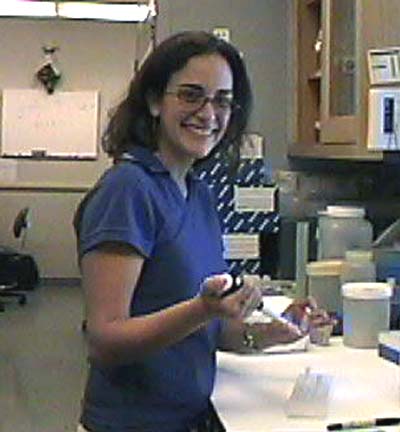
The Arabidopsis thaliana genome has been sequenced, allowing use of sophisticated tools for genetic studies. It is known that DME controls gene transcription, encodes a DNA glycosylase, and has homologous proteins in the Arabidopsis genome as well as orthologs in rice, wheat, and maize. We do not know, however, how this is accomplished. Carolina will investigate the DEMETER protein, essential for seed viability in Arabidopsis, using molecular tools and genetics. The project has two phases: 1) To determine if the family member proteins can replace the DME protein; 2) determine […]
Allen Kwong
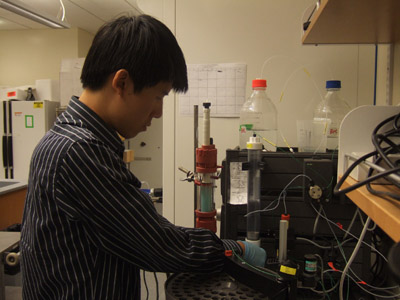
Although protein translocations across cellular membranes are vitally significant, the biophysical mechanisms underlying such processes remain obscure. Nevertheless, methods exist for studying translocation processes. In particular, anthrax toxins movement across cellular membranes provides a model for studying general translocation mechanisms. Allen’s specific interest lies in elucidating the steric effects that particularly bulky, hydrophobic amino acid side-chains have on anthrax toxins translocation. By investigating translocation rates of anthrax toxin, Allen hopes to provide a deeper understanding of the toxins mechanism for cell entry. In addition, this study may provide implications for […]